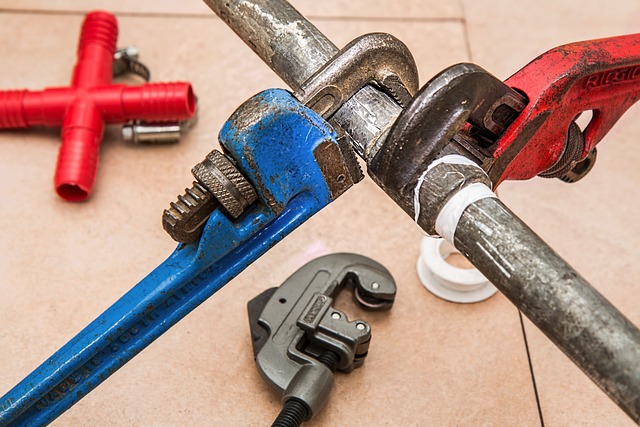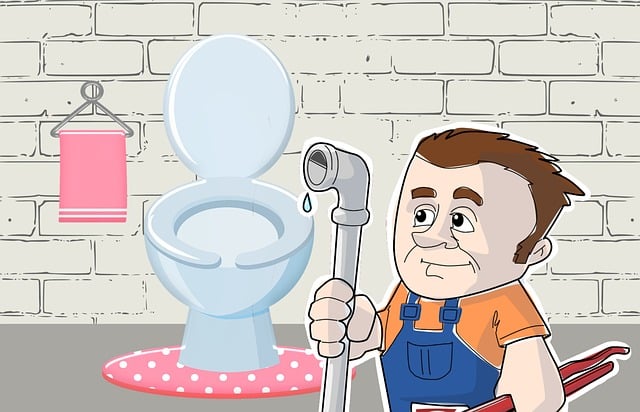Modern plumbers now employ advanced non-invasive technologies like thermal imaging cameras and acoustic leak detectors to pinpoint leaks in homes without causing destructive entry. Thermal imaging detects moisture and temperature variations signaling a leak, while acoustic detectors amplify the sound of water leaks to make them audible for precise location. These methods complement traditional techniques such as pressure testing and visual inspections, enhancing leak detection and preventing water damage and reducing utility costs. Camera systems with high-resolution cameras on flexible cables access complex pipe networks, aiding in early detection of blockages, corrosion, and leaks within pipes, thus saving time and minimizing disturbance. The plumbing industry's adoption of these technologies reflects a commitment to innovation and customer satisfaction. Acoustic leak detectors have transformed plumbing diagnostics by accurately locating leaks through sound identification, avoiding the need for extensive excavation. These devices capture and analyze water flow acoustic signatures, even identifying subtle sounds in challenging conditions. By integrating signal processing technology, they ensure rapid and accurate leak identification, maintaining plumbing system integrity and preventing water damage. Acoustic leak detection stands as a valuable tool for plumbers, conserving water and minimizing environmental disruption across various settings, from homes to large-scale operations.
When it comes to detecting leaks in your home’s plumbing system, modern technology has significantly advanced beyond traditional methods. Today, plumbers employ sophisticated cameras and acoustic devices to pinpoint leaks with precision, offering homeowners effective solutions to prevent water damage. This article delves into the latest leak detection techniques as practiced by expert plumbers, exploring how camera systems provide a visual insight into your pipes, while listening devices amplify the subtle sounds of escaping water. We will navigate the science behind acoustic leak detection, weigh the benefits of non-invasive methods, and discuss the cost-effectiveness of early intervention. From DIY tips to professional guidance, this comprehensive overview covers the full spectrum of modern leak detection practices, ensuring you are well-equipped to handle leaks with confidence.
- Leak Detection Techniques for Homeowners: A Plumber's Perspective
- The Role of Advanced Camera Systems in Plumbing Diagnostics
- Acoustic Leak Detectors: How Listening Devices Help Plumbers Identify Water Leaks
- Understanding the Science Behind Acoustic Leak Detection
Leak Detection Techniques for Homeowners: A Plumber's Perspective

When it comes to leak detection techniques for homeowners, a plumber’s expertise is invaluable. Advanced technology has equipped plumbers with non-invasive tools that can pinpoint the exact location of leaks beneath concrete slabs or within walls without tearing them apart. Thermal imaging cameras are instrumental in this regard; they detect moisture and temperature variations that signal a leak’s presence. These cameras reveal subtle differences in temperature that occur when water seeps into an area, making it possible to identify the source of the problem from above. Similarly, acoustic leak detectors are another non-invasive tool plumbers use. They amplify the sound of running or dripping water so that even the smallest leaks can be heard and located. This technology is particularly useful in areas with low water flow where leaks might otherwise go unnoticed.
Plumbers also employ traditional methods like pressure testing and visual inspection to ensure a comprehensive approach to leak detection. Pressure testing involves isolating a portion of the plumbing system and increasing the water pressure within it, which can then be monitored for any unexpected drops that would indicate a leak. Visual inspections often accompany these tests, allowing plumbers to observe signs of wear or damage that could contribute to leaks. By combining both modern and traditional techniques, plumbers can offer homeowners reliable solutions to detect and address leaks efficiently, minimizing potential water damage and saving on utility costs.
The Role of Advanced Camera Systems in Plumbing Diagnostics

Advanced camera systems have revolutionized the field of plumbing diagnostics, offering a non-invasive and precise method for plumbers to inspect pipes and detect leaks. These sophisticated systems consist of a high-resolution camera mounted on a flexible cable that can navigate through the intricate network of pipes within a building. Plumbers employ these cameras to visualize the interior condition of pipes, identifying potential issues such as blockages, corrosion, or leaks without having to undertake extensive excavations. This approach not only saves time but also minimizes disruption to property, making it an environmentally friendly solution. The cameras transmit real-time video feeds to a monitor above ground, allowing the plumber to pinpoint the exact location and extent of the problem. This enables them to make informed decisions on the best course of action, whether it’s repairing a small leak or replacing damaged pipes. The integration of camera systems in plumbing diagnostics is a testament to the industry’s commitment to innovation and customer satisfaction, ensuring that homes and businesses remain safe from water damage and plumbing system malfunctions.
Acoustic Leak Detectors: How Listening Devices Help Plumbers Identify Water Leaks

Acoustic leak detectors represent a significant technological advancement in the plumbing industry, enabling professionals to pinpoint water leaks with precision. These listening devices are equipped with sensitive microphones that can capture the distinct sound waves generated by running or leaking water. By analyzing the frequency and pitch of these acoustic signals, plumbers can distinguish between different types of leaks and their exact locations. This technology is particularly useful in scenarios where visual inspection is hindered by factors such as darkness, obstruction, or complex infrastructure. The subtle sounds of a leak, often compared to the noise of a dripping faucet but potentially much quieter, can be amplified and isolated from ambient noise, thanks to the sophisticated signal processing capabilities built into these devices. This allows plumbers to detect leaks that might otherwise have gone unnoticed, preventing minor issues from escalating into costly repairs or water waste.
The application of acoustic leak detection is versatile and can be used in various settings, including residential homes, commercial buildings, and industrial facilities. It is a non-invasive method that eliminates the need for extensive excavation, saving time and resources. The technology is also increasingly accessible, with many plumbers incorporating these devices into their toolkit to offer more efficient and effective services. By combining the expertise of a skilled plumber with the capabilities of an acoustic leak detector, property owners can rest assured that any water leaks will be swiftly and accurately identified, ensuring the integrity of their plumbing systems is maintained and potential water damage is mitigated.
Understanding the Science Behind Acoustic Leak Detection

Acoustic leak detection is a specialized technique employed by plumbers to pinpoint the exact location of water leaks within a pipeline system using sound. This non-invasive method relies on the science that sound waves travel at different speeds through different mediums. When a plumber conducts an acoustic survey, they listen for high-frequency sounds that are emitted by leaking pipes. These sounds, which are inaudible to the human ear, can be detected with specially calibrated listening devices known as acoustic leak detectors or acoustic correlation loggers. The frequency of these sounds correlates with the rate at which water is escaping from the pipe. By analyzing the sound’s frequency, duration, and amplitude, plumbers can ascertain the precise point where the leak originates. This approach allows for accurate leak detection without the need for extensive excavation, thus saving time, resources, and minimizing disruption to surrounding areas. The technology behind acoustic leak detection has evolved significantly, with advancements in microphone design and data processing algorithms enhancing the precision of these devices. As a result, plumbers can effectively detect leaks across various environments, from residential homes to large-scale industrial facilities, ensuring that water is conserved and potential damage is mitigated.
In conclusion, homeowners and professional plumbers now possess sophisticated tools that enhance leak detection with remarkable precision. Advanced camera systems and acoustic listening devices have become indispensable in the plumbing trade, offering non-invasive methods to locate leaks swiftly and accurately. These innovations not only save time and resources but also ensure that homes remain safe from water damage. By understanding the science behind acoustic leak detection and employing the latest camera technologies, plumbers can address issues before they escalate, providing homeowners with peace of mind. The integration of these techniques into modern plumbing practices underscores the evolution of the profession, ensuring that homes are protected against the unseen threat of water leaks.
